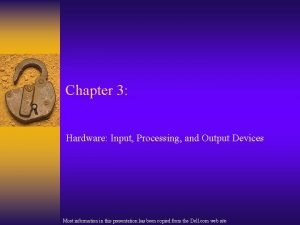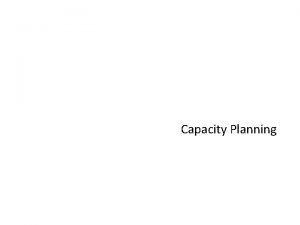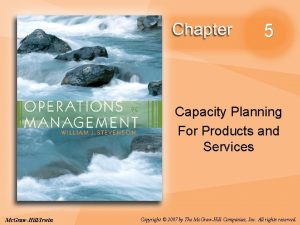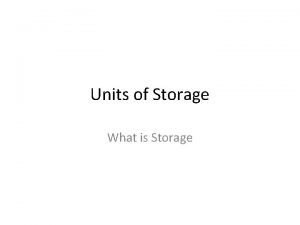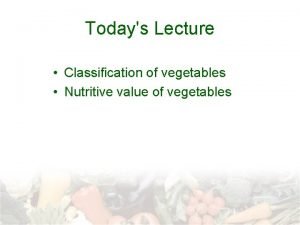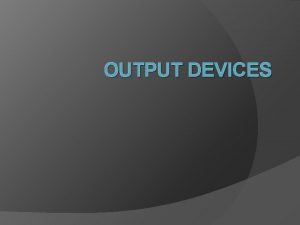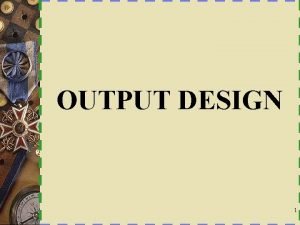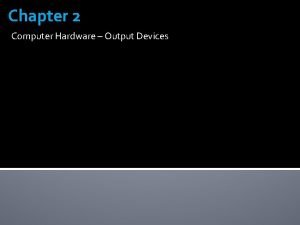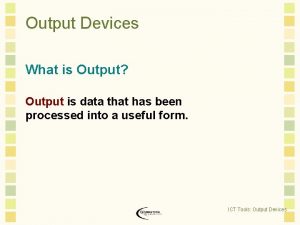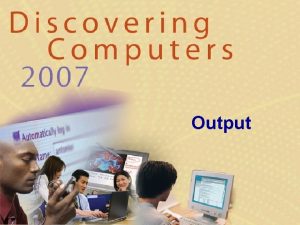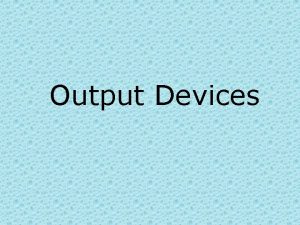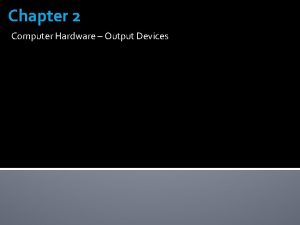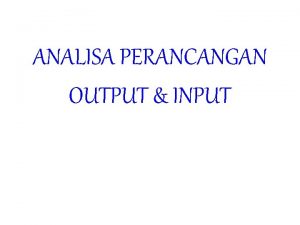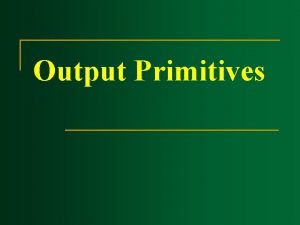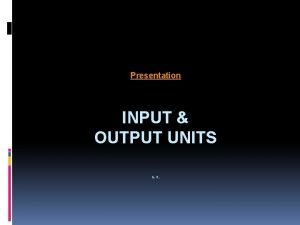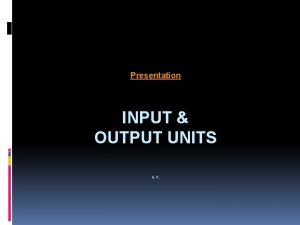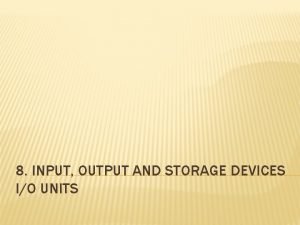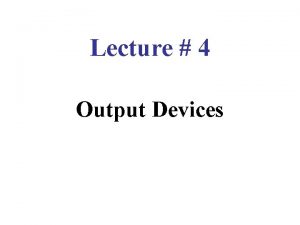Lecture 3 Storage units output units Storage units


















- Slides: 18

Lecture 3 Storage units , output units

Storage units • used to store data at the request of the user, the units do not lose their contents when you turn off the device or power Outages

Storage units Main Secondary HDD ZIP Drive FDD Flash memory CDROM drive External HDD

Main HDD Ø Consists of several hard disk drives and this explains its ability to absorb a large amount of data. Ø storage capacity of up to more than 400 GBYTE

Main FDD Ø Floppy disk consists of only one disk and this explains to absorb a small amount of data. Ø the maximum storage capacity is 1. 44 Mbyte.

Main CDROM drive Ø CD consists of material reflecting the light ، the data is stored by using lasers. Ø used for read-only and cannot add data to it only through a special device to write the so-called CDWriter. Ø storage capacity of up to 750 MBYTE.

Secondary ZIP Drive Ø Similar to the floppy disk in terms of shape and has a drive motor is similar to the floppy disk. Ø it is characterized by a capacity of storage medium.

Secondary Flash memory Ø small-sized storage units. Ø connected through the ports of USB. Ø capacity of up to more than 32 MByte.

Secondary External HDD Ø External drive the largest in terms of storage capacity, cost and size.

Input units Input unit Enter and deliver the data to be processed to the CPU. Ex: q. Keyboard. q. Mouse. q. Scanner. q. Bar code reader. q. Joy stick

output units Output units Directed by which the data have been processed when the user requested Ex: q. Monitor. q. Printer. q. Speaker.

input, output at the same time Touch screen Is a unit display data (text, images) and at the same time to receive orders and options by clicking on it by the finger or a special pen

Units of measurement capacities in the computer • Represent the data within the computer using binary digital data(0, 1). • BIT is one of the two cases (0, 1)

Units derived from BIT Ø Byte=8 Bit Ø Kbyte=1024 Byte Ø MByte=1024 Kbyte Ø GByte= 1024 MByte

Units used to measure the capacity of storage media Ø Capacity is measured in bytes of storage media and Derivative

Units of measure processor speed Ø Processor speed is measured through the unity of electrical frequency (Hz) and derivatives v 1 MHZ= 1000 HZ v 1 GHZ=1000 X 1000 HZ=1000 MHZ

The units measure the speed of the motherboard Ø Measured the speed of the motherboard through the unit Hz. Ø the speed of the so-called BUS

Note When increasing the speed of the motherboard and processor and memory capacity of RAM and hard drive capacity increases the efficiency of the computer
 01:640:244 lecture notes - lecture 15: plat, idah, farad
01:640:244 lecture notes - lecture 15: plat, idah, farad Hardware output komputer
Hardware output komputer Input processing output
Input processing output Capacity planning objectives
Capacity planning objectives Production units have an optimal rate of output where
Production units have an optimal rate of output where Production units have an optimal rate of output where
Production units have an optimal rate of output where Storage devices of computer
Storage devices of computer Secondary storage provides temporary or volatile storage
Secondary storage provides temporary or volatile storage Unified storage vs traditional storage
Unified storage vs traditional storage Transferring of data from auxiliary storage to main storage
Transferring of data from auxiliary storage to main storage What are storage device
What are storage device K
K When units manufactured exceed units sold:
When units manufactured exceed units sold: Lecture outline example
Lecture outline example Partes de una planta
Partes de una planta Lecture sound systems
Lecture sound systems Introduction to algorithms lecture notes
Introduction to algorithms lecture notes Requirement analysis in software engineering notes
Requirement analysis in software engineering notes Nutritive value of watermelon
Nutritive value of watermelon


